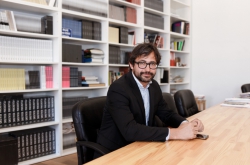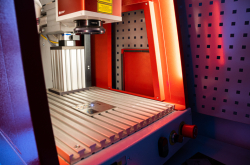In her speech, Dr. Paraskevi Pouli talked about the results of using laser techniques for analyzing masterpieces. According to the researcher, these days laser technologies help preserve cultural heritage objects. The speaker presented achievements reached by specialists of the Institute of Electronic Structure and Laser (IESL) in Heraklion.
The researchers offer to use laser techniques to study historical objects in order to disclose hidden defects of objects, find all "layers" of masterpieces, provide laser cleaning and preserve monuments. For instance, if edges of a picture are burnt, one can use a laser to "cut off" a burnt layer and disclose an initial image.
"A laser beam focuses on the object, and then it removes material from the surface by laser ablation. That is how laser cleaning works. If one changes a laser’s focus, it scans an image. When beams are scattered, they can detect defects of the objects and provide structural analysis," notes Paraskevi Pouli.
The Doctor presented several types of laser analyses that she and her colleagues use in their projects.

Paraskevi Pouli
Laser Induced Breakdown Spectroscopy (LIBS)
The laser focused on the object forms plasma, which sends data to a spectroscope. Using spectral lines one can detect how much material was used to create an object and also whether this material is important in historical terms. The main advantage of this method is that it helps get a result in a second. It is widely used in archaeological excavations — these technologies assist in evaluating quality of materials on site. It can detect all chemical elements of the Periodic Table. Using LIBS technology it is enough to use a small amount of material to analyze it. The devices are portable and can scan without touching the objects. Also LIBS costs appropriately.
Raman-analysis
This type of analysis can be applied to both solid objects and liquids. Its' benefit is that unlike LIBS, Raman doesn’t need samples. It means that art objects stay intact. Raman-analysis makes it possible to learn a molecular composition of materials of an object. According to Dr. Pouli, the researchers of the Institute of Electronic Structure and Laser (IESL) use LIBS and Raman at the same. They identify materials with LIBS and then use Raman to analyze its molecular composition.
Nonlinear spectroscopy
This technology detects layers of materials using multi-photon excitement. Thanks to second harmonic excitation and third harmonic generation it is possible to identify layers, composition of colors, and analyze damage in art objects. This technology is still under development.
TH spectroscopy
This technology can be applied to paper, wood, plastic and transparent objects. TH spectroscopy is used in art, medicine (for detecting composition of medications) and the food industry. This is also a tool for water quality analysis.

Ken Renaldo
Ken Renaldo, professor of Ohio State University, who spoke next, presented robotic and bio-art installations from his collections and those ordered by museums from all over the world.
A weapon to stop wars
One of his main projects is a gun with bullets filled with woman’s tears. Once the artist read in an article that when men smell tears of women, their testosterone level diminishes, which makes them less aggressive. The scientist came to the point that women have a biological weapon. Several agencies have already ordered "Woman’sTears."
An Advanced Ecosystem
In this work Ken Renaldo paid attention to the problem of using plastic in the food industry. He created a unique system for growing plants which is a piece of natural environment. The plants are put in special bags designed to absorb sunlight in winter and radiate heat back into the room and in summer. The system is appropriate for indoor and outdoor conditions.

A new social need
The researcher created the Paparazzi Bots installation, which makes photos of people when they smile. The cameras move towards you, as if they are paparazzi and you are a celebrity. The system can analyze pictures and detect interesting and "boring" smiles.
Self-charging
All the gadgets we use always need charging. The researcher designed robots that look for socket in a room so as to help if somebody’s phone battery is low. They look like spiders with several pairs of eyes and legs.
Aquaponics
The Farm Fountain is a giant fish tank where fish waste is used as nutrition for plant roots. The system works in such a way that plants purify the water for fish. Mr. Renaldo created this project in alliance with artist Amy Youngs.




